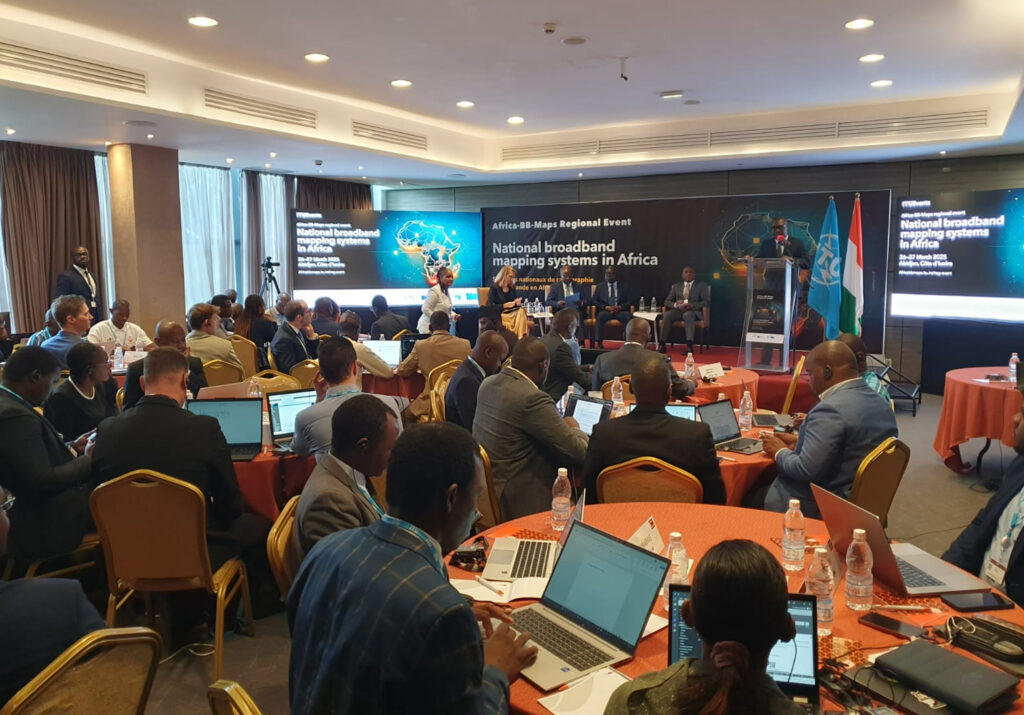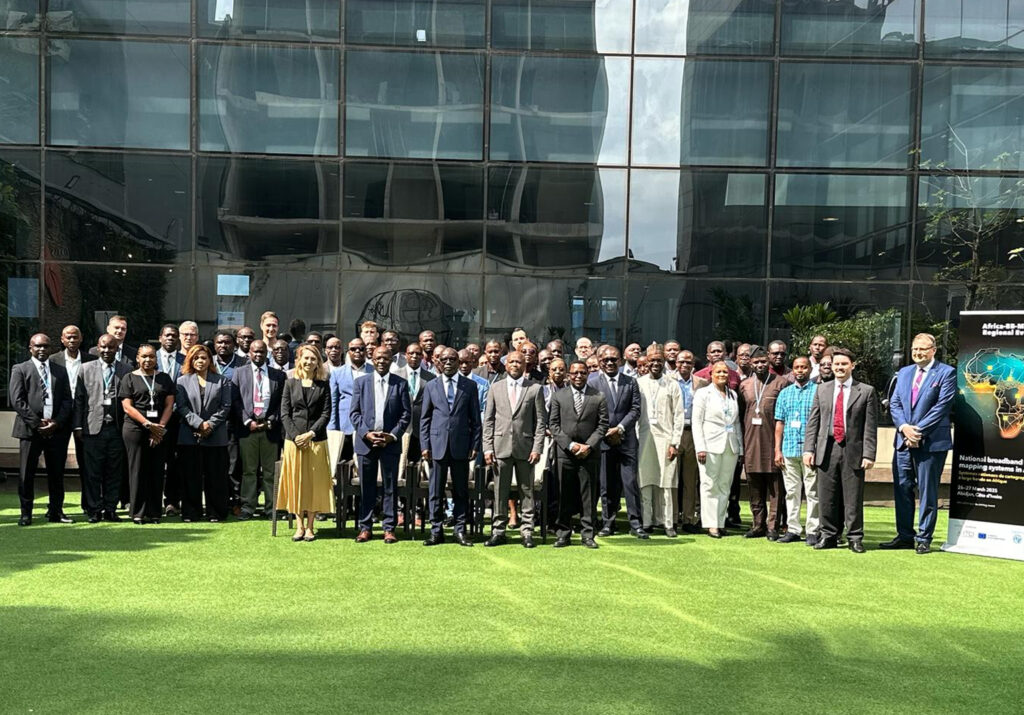
Implementing National Broadband Mapping Systems in Africa
Mapping broadband infrastructure is the key to identifying connectivity gaps in the Sub-Saharan Africa region, facilitating resource allocation, and helping to bridge the digital divide faster and more effectively.
Implemented by the ITU Telecommunication Development Bureau (BDT) and funded by the European Union, the EU Support to Africa’s National Broadband Mapping Systems (Africa-BB-Maps) project aims to support the establishment of harmonized broadband mapping systems in 11 beneficiary countries in the Sub-Saharan Africa region. The countries are: Benin, Botswana, Burundi, Côte d’Ivoire, Ethiopia, Kenya, Malawi, Nigeria, Uganda, Zambia, and Zimbabwe.
The implementation phase kicked off at the Africa-BB-Maps event, held in Abidjan, Côte d’Ivoire, from 26 to 27 March 2025.


Stakeholders that will be part of the project to implement broadband mapping systems in Sub-Saharan Africa had an opportunity to connect, learn, and collaborate. The event also benefited from a series of expert contributions from Europe, including the European Commission, the Body of European Regulators for Electronic Communications (BEREC), Croatia, Cyprus, Denmark, Italy, Lithuania, France, Poland and Slovenia.
“You are here as experts representing your governments and regulatory authorities, and you are in a position to shape the digital ecosystem and drive investment efforts by industry and private sector to where it is most needed, in this case infrastructure, which has the potential to help achieve universal and affordable connectivity, sustainable digital transformation on the ground. I am pleased that this meeting is yet another step towards advancing the mapping of broadband maps in your individual countries and across the region to ensure that strategic information on existing gaps is readily available for informed planning,” said Dr Cosmas Luckyson Zavazava, Director of BDT. “By providing credible data on existing infrastructure gaps to investors, donors and governments, appropriate interventions could be made in an impactful way through efficient resource allocation. I am grateful to the European Commission for its steadfast support to our various projects across the globe, and in this case, the project that brought us here today.”
ITU’s Facts and Figures 2024 report shows that an estimated 38% of the population in Africa uses the Internet. Establishing broadband mapping systems in 11 Sub-Saharan countries through the Africa-BB-Maps project will be a game-changer for evidence-based connectivity policies, helping governments and operators to pinpoint underserved areas, and enhance digital inclusion.
The project underscores Europe and BDT’s shared dedication to enhancing digital connectivity and using it to accelerate socio-economic development in Africa.
The Africa-BB-Maps project is under the Africa-Europe Digital Regulators Partnership, part of the European Union’s Global Gateway strategy.
This is an ITU Development #DigitalImpactUnlocked story
About the project
Project number: 9RAF24107
Project title: EU Support to Africa’s National Broadband Mapping Systems (AfricaBBMaps)
Description: The project falls under the EU’s broader Action “Africa-Europe Digital Regulators Partnership” (Annual Action Plan 2023 SSA Regional MIP), as part of the EU’s efforts to boost a conducive environment for digital infrastructure investments and for achieving universal digital connectivity in Africa. Project implementation is set to support the establishment and harmonization of broadband mapping systems in Sub-Saharan Africa (SSA) countries (Overall Objective) and is structured around three key Outcomes:
– Outcome 1: Improved capacities of SSA national regulators for conducive policy making for the establishment and effective use of harmonized broadband mapping systems;
– Outcome 2: Improved capacities of regional and national regulators on open-source solutions and open data practices and standards for broadband mapping systems in SSA; and
– Outcome 3: Improved technical capacity of targeted National Regulatory Authorities (NRAs) and ICT ministries in charge of using and maintaining broadband mapping projects, including required installation of hardware and software equipment for broadband mapping deployment.
Visit the project page for more details.